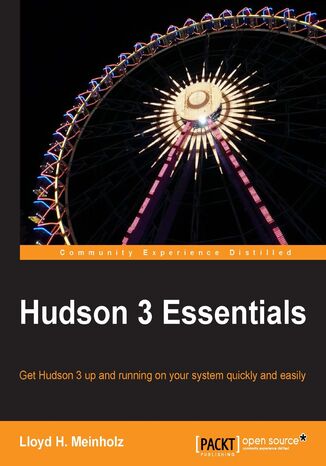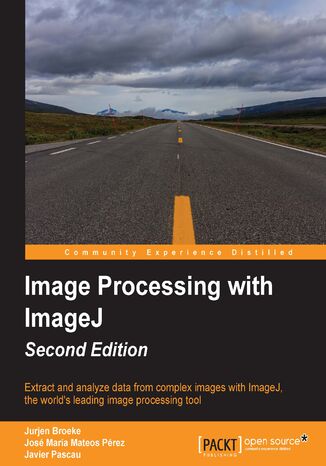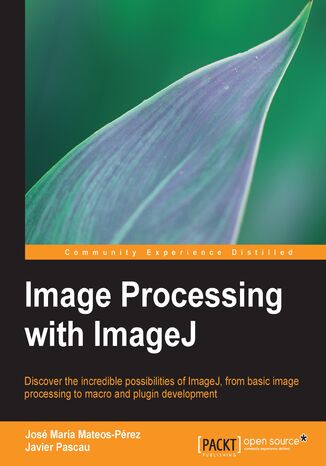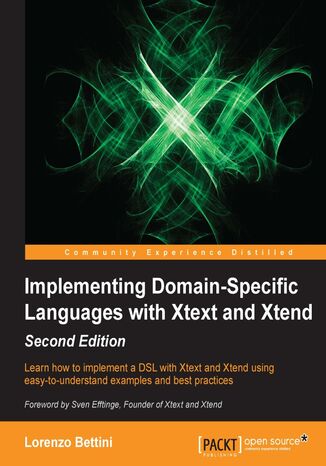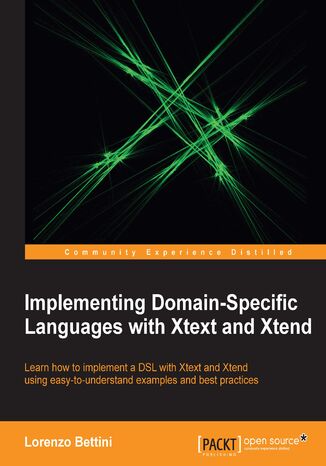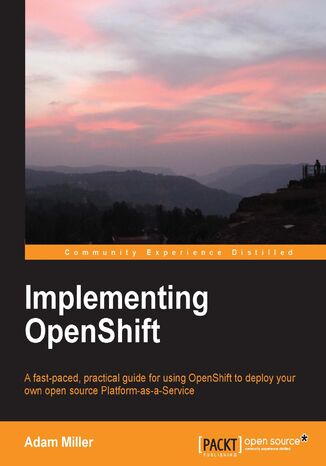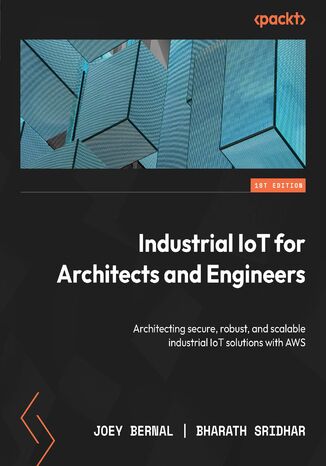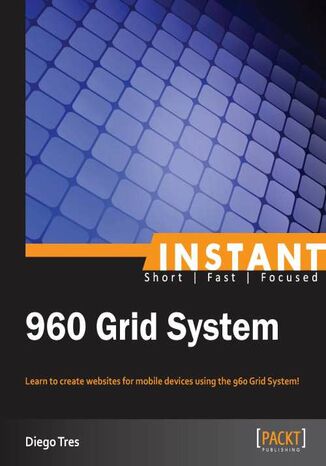Kategorie
-
- Bitcoin
- Bizneswoman
- Coaching
- Controlling
- E-biznes
- Ekonomia
- Finanse
- Giełda i inwestycje
- Kompetencje osobiste
- Komputer w biurze
- Komunikacja i negocjacje
- Mała firma
- Marketing
- Motywacja
- Multimedialne szkolenia
- Nieruchomości
- Perswazja i NLP
- Podatki
- Polityka społeczna
- Poradniki
- Prezentacje
- Przywództwo
- Public Relation
- Raporty, analizy
- Sekret
- Social Media
- Sprzedaż
- Start-up
- Twoja kariera
- Zarządzanie
- Zarządzanie projektami
- Zasoby ludzkie (HR)
-
- Architektura i wnętrza
- BHP
- Biznes i Ekonomia
- Dom i ogród
- E-Biznes
- Ekonomia i finanse
- Ezoteryka
- Finanse
- Finanse osobiste
- Firma
- Fotografia
- Informatyka
- Kadry i płace
- Kobieca
- Komputery, Excel
- Księgowość
- Kultura i literatura
- Naukowe i akademickie
- Ochrona środowiska
- Opiniotwórcze
- Oświata
- Podatki
- Podróże
- Psychologia
- Religia
- Rolnictwo
- Rynek książki i prasy
- Transport i Spedycja
- Zdrowie i uroda
-
- Aplikacje biurowe
- Bazy danych
- Bioinformatyka
- Biznes IT
- CAD/CAM
- Digital Lifestyle
- DTP
- Elektronika
- Fotografia cyfrowa
- Grafika komputerowa
- Gry
- Hacking
- Hardware
- IT w ekonomii
- Pakiety naukowe
- Podręczniki szkolne
- Podstawy komputera
- Programowanie
- Programowanie mobilne
- Serwery internetowe
- Sieci komputerowe
- Start-up
- Systemy operacyjne
- Sztuczna inteligencja
- Technologia dla dzieci
- Webmasterstwo
-
- Antologie
- Ballada
- Biografie i autobiografie
- Dla dorosłych
- Dramat
- Dzienniki, pamiętniki, listy
- Epos, epopeja
- Esej
- Fantastyka i science-fiction
- Felietony
- Fikcja
- Humor, satyra
- Inne
- Klasyczna
- Kryminał
- Literatura faktu
- Literatura piękna
- Mity i legendy
- Nobliści
- Nowele
- Obyczajowa
- Okultyzm i magia
- Opowiadania
- Pamiętniki
- Podróże
- Poemat
- Poezja
- Polityka
- Popularnonaukowa
- Powieść
- Powieść historyczna
- Proza
- Przygodowa
- Publicystyka
- Reportaż
- Romans i literatura obyczajowa
- Sensacja
- Thriller, Horror
- Wywiady i wspomnienia
-
- Archeologia
- Bibliotekoznawstwo
- Filmoznawstwo
- Filologia
- Filologia polska
- Filozofia
- Finanse i bankowość
- Geografia
- Gospodarka
- Handel. Gospodarka światowa
- Historia i archeologia
- Historia sztuki i architektury
- Kulturoznawstwo
- Lingwistyka
- Literaturoznawstwo
- Logistyka
- Matematyka
- Medycyna
- Nauki humanistyczne
- Pedagogika
- Pomoce naukowe
- Popularnonaukowa
- Pozostałe
- Psychologia
- Socjologia
- Teatrologia
- Teologia
- Teorie i nauki ekonomiczne
- Transport i spedycja
- Wychowanie fizyczne
- Zarządzanie i marketing
-
- BHP
- Historia
- Kodeks drogowy. Prawo jazdy
- Nauki prawne
- Ochrona zdrowia
- Ogólne, kompendium wiedzy
- Podręczniki akademickie
- Pozostałe
- Prawo budowlane i lokalowe
- Prawo cywilne
- Prawo finansowe
- Prawo gospodarcze
- Prawo gospodarcze i handlowe
- Prawo karne
- Prawo karne. Przestępstwa karne. Kryminologia
- Prawo międzynarodowe
- Prawo międzynarodowe i zagraniczne
- Prawo ochrony zdrowia
- Prawo oświatowe
- Prawo podatkowe
- Prawo pracy i ubezpieczeń społecznych
- Prawo publiczne, konstytucyjne i administracyjne
- Prawo rodzinne i opiekuńcze
- Prawo rolne
- Prawo socjalne, prawo pracy
- Prawo Unii Europejskiej
- Przemysł
- Rolne i ochrona środowiska
- Słowniki i encyklopedie
- Zamówienia publiczne
- Zarządzanie
-
- Afryka
- Albumy
- Ameryka Południowa
- Ameryka Środkowa i Północna
- Australia, Nowa Zelandia, Oceania
- Austria
- Azja
- Bałkany
- Bliski Wschód
- Bułgaria
- Chiny
- Chorwacja
- Czechy
- Dania
- Egipt
- Estonia
- Europa
- Francja
- Góry
- Grecja
- Hiszpania
- Holandia
- Islandia
- Litwa
- Łotwa
- Mapy, Plany miast, Atlasy
- Miniprzewodniki
- Niemcy
- Norwegia
- Podróże aktywne
- Polska
- Portugalia
- Pozostałe
- Przewodniki po hotelach i restauracjach
- Rosja
- Rumunia
- Słowacja
- Słowenia
- Szwajcaria
- Szwecja
- Świat
- Turcja
- Ukraina
- Węgry
- Wielka Brytania
- Włochy
-
- Filozofie życiowe
- Kompetencje psychospołeczne
- Komunikacja międzyludzka
- Mindfulness
- Ogólne
- Perswazja i NLP
- Psychologia akademicka
- Psychologia duszy i umysłu
- Psychologia pracy
- Relacje i związki
- Rodzicielstwo i psychologia dziecka
- Rozwiązywanie problemów
- Rozwój intelektualny
- Sekret
- Seksualność
- Uwodzenie
- Wygląd i wizerunek
- Życiowe filozofie
-
- Bitcoin
- Bizneswoman
- Coaching
- Controlling
- E-biznes
- Ekonomia
- Finanse
- Giełda i inwestycje
- Kompetencje osobiste
- Komunikacja i negocjacje
- Mała firma
- Marketing
- Motywacja
- Nieruchomości
- Perswazja i NLP
- Podatki
- Polityka społeczna
- Poradniki
- Prezentacje
- Przywództwo
- Public Relation
- Sekret
- Social Media
- Sprzedaż
- Start-up
- Twoja kariera
- Zarządzanie
- Zarządzanie projektami
- Zasoby ludzkie (HR)
-
- Antologie
- Ballada
- Biografie i autobiografie
- Dla dorosłych
- Dramat
- Dzienniki, pamiętniki, listy
- Epos, epopeja
- Esej
- Fantastyka i science-fiction
- Felietony
- Fikcja
- Humor, satyra
- Inne
- Klasyczna
- Kryminał
- Literatura faktu
- Literatura piękna
- Mity i legendy
- Nobliści
- Nowele
- Obyczajowa
- Okultyzm i magia
- Opowiadania
- Pamiętniki
- Podróże
- Poezja
- Polityka
- Popularnonaukowa
- Powieść
- Powieść historyczna
- Proza
- Przygodowa
- Publicystyka
- Reportaż
- Romans i literatura obyczajowa
- Sensacja
- Thriller, Horror
- Wywiady i wspomnienia
-
- Filozofie życiowe
- Komunikacja międzyludzka
- Mindfulness
- Ogólne
- Perswazja i NLP
- Psychologia akademicka
- Psychologia duszy i umysłu
- Psychologia pracy
- Relacje i związki
- Rodzicielstwo i psychologia dziecka
- Rozwiązywanie problemów
- Rozwój intelektualny
- Sekret
- Seksualność
- Uwodzenie
- Wygląd i wizerunek
- Życiowe filozofie
- Ebooki
- Programowanie
- Techniki programowania
Techniki programowania
Continuous integration (CI) with automated test execution has been widely adopted in recent years. The concept behind CI has changed how companies look at Build Management, Release Management, Deployment Automation, and Test Orchestration. Hudson is a CI solution that provides executives, business managers, software developers, and architects with a better sense of the development progress and code quality of projects throughout their development life cycle.A fast-paced and hands-on introduction to the key features of Hudson 3. You will be introduced to tools that can be used to improve the quality of software development projects. You will also learn how to install and secure Hudson in a variety of IT environments. Staring with a brief introduction to Hudson and how it helps many IT organizations deliver high quality software, Hudson 3 Essentials will show you how Hudson can be installed and deployed in various environments. You will also be guided through the different methods of securing your Hudson installation. Moving on from the basics, you will be introduced to several important Hudson plugins and learn how to extend its functionality by developing your own plugins. You will be shown how Hudson can be used to build different types of applications and how it can deploy a web application to an application server. Finally, you will discover how Hudson can be used to perform automated testing on software applications, and how to generate reports that describe the results.
Jurjen Broeke, Javier Pascau, Jose Maria Mateos-Perez
Advances in image processing have been vital for the scientific and technological communities, making it possible to analyze images in greater detail than ever before. But as images become larger and more complex, advanced processing techniques are required. ImageJ is built for the modern challenges of image processing – it’s one of the key tools in its development, letting you automate basic tasks so you can focus on sophisticated, in depth analysis.This book demonstrates how to put ImageJ into practice. It outlines its key features and demonstrates how to create your own image processing applications using macros and ImageJ plugins. Once you’ve got to grips with the basics of ImageJ, you’ll then discover how to build a number of different image processing solutions. From simple tasks to advanced and automated image processing, you’ll gain confidence with this innovative and powerful tool – however and whatever you are using it for.
Jose Maria Mateos-Perez, Javier Pascau
Digital image processing is an increasingly important field across a vast array of scientific disciplines. ImageJ's long history and ever-growing user base makes it a perfect candidate for solving daily tasks involving all kinds of image analysis processes.Image Processing with ImageJ is a practical book that will guide you from the most basic analysis techniques to the fine details of implementing new functionalities through the ImageJ plugin system, all of it through the use of examples and practical cases.ImageJ is an excellent public domain imaging analysis platform that can be very easily used for almost all your image processing needs. Image Processing with ImageJ will start by showing you how to open a number of different images, become familiar with the different options, and perform simple analysis operations using the provided image samples.You will also learn how to make modifications through ImageJ filters and how to make local measurements using the selections system. You will also find the instructions necessary to record all the steps you perform so they can be saved and re-run on the same image to ensure analysis reproducibility. Finally, you will get to know some different ImageJ plugins and will learn how to implement your own.
Xtext is an open source Eclipse framework for implementing domain-specific languages together with IDE functionalities. It lets you implement languages really quickly; most of all, it covers all aspects of a complete language infrastructure, including the parser, code generator, interpreter, and more.This book will enable you to implement Domain Specific Languages (DSL) efficiently, together with their IDE tooling, with Xtext and Xtend. Opening with brief coverage of Xtext features involved in DSL implementation, including integration in an IDE, the book will then introduce you to Xtend as this language will be used in all the examples throughout the book. You will then explore the typical programming development workflow with Xtext when we modify the grammar of the DSL. Further, the Xtend programming language (a fully-featured Java-like language tightly integrated with Java) will be introduced. We then explain the main concepts of Xtext, such as validation, code generation, and customizations of runtime and UI aspects. You will have learned how to test a DSL implemented in Xtext with JUnit and will progress to advanced concepts such as type checking and scoping. You will then integrate the typical Continuous Integration systems built in to Xtext DSLs and familiarize yourself with Xbase. By the end of the book, you will manually maintain the EMF model for an Xtext DSL and will see how an Xtext DSL can also be used in IntelliJ.
Xtext is an open source Eclipse framework for implementing domain-specific languages together with its IDE functionalities. It lets you implement languages really quickly, and, most of all, it covers all aspects of a complete language infrastructure, starting from the parser, code generator, interpreter, and more. Implementing Domain-Specific Languages with Xtext and Xtend will teach you how to develop a DSL with Xtext, an Eclipse framework for implementing domain-specific languages. The chapters are like tutorials that describe the main concepts of Xtext such as grammar definition, validation, code generation, customizations, and many more, through uncomplicated and easy-to-understand examples. Starting with briefly covering the features of Xtext that are involved in a DSL implementation, including integration in an IDE, the book will then introduce you to Xtend as this language will be used in all the examples throughout the book. We then proceed by explaining the main concepts of Xtext, such as validation, code generation, and customizations of runtime and UI aspects. By the end of the book, you will have learned how to test a DSL implemented in Xtext with Junit, in order to follow a test-driven development strategy that will help the developer implement maintainable code that is much faster and cleaner. A test-driven approach is used throughout the book when presenting advanced concepts such as type checking and scoping. The book also shows you how to build and release a DSL so that it can be installed in Eclipse, and gives you hints on how to build the DSL headlessly in a continuous integration server. Implementing Domain-Specific Languages with Xtext and Xtend aims to complement the official Xtext documentation to explain the main concepts through simplified examples and to teach the best practices for a DSL implementation in Xtext. It is a Beginner's Guide which should set you up for professional development DSL and its Eclipse IDE tooling.
Gone are the days of having to provision hardware, deploy, and manage an entire environment just to write code for the next big idea, project, or custom web application. A Platform-as-a-Service cloud aims to fulfill this need, allowing developers to work more efficiently as well as allowing DevOps teams to spend less time fulfilling requests for these environments. Join us as we move into the future with OpenShift.Implementing OpenShift will walk the reader through how to easily develop and deploy upon an open source OpenShift Platform-as-a-Service. We will then discuss the architecture of the platform so that users have some insight into the inner workings of the environment. We will then take a step away from the user aspect and cover DevOps topics so that we can perform the deployment of our very own open source Platform-as-a-Service using the upstream OpenShift Origin code base.Developers are no longer in need of provisioning full-scale development environments by provisioning servers, installing and configuring software, and maintaining infrastructure just to write software. This book will show you how developers can move out of this archaic mindset and into the future utilizing OpenShift Platform-as-a-Service technologies, breaking away from the marketing jargon and into the technology that allows developers to get work done. This book also delves into the realm of DevOps, allowing you to run your own environment to support your development teams more efficiently.This book will show you how the OpenShift Platform-as-a-Service can redefine the way web application developers work by providing the building blocks upon which they are able to create their next big idea. From there, the reader will progress through the OpenShift architecture and on to a brisk automated deployment using DevOps technologies.You will learn everything you need to know in order to use OpenShift to develop and deploy applications in the cloud as well as how to deploy your very own OpenShift Origin-based Platform-as-a-Service cloud.
When it comes to using the core and managed services available on AWS for making decisions about architectural environments for an enterprise, there are as many challenges as there are advantages. This Industrial IoT book follows the journey of data from the shop floor to the boardroom, identifying goals and aiding in strong architectural decision-making.You’ll begin from the ground up, analyzing environment needs and understanding what is required from the captured data, applying industry standards and conventions throughout the process. This will help you realize why digital integration is crucial and how to approach an Industrial IoT project from a holistic perspective. As you advance, you’ll delve into the operational technology realm and consider integration patterns with common industrial protocols for data gathering and analysis with direct connectivity to data through sensors or systems. The book will equip you with the essentials for designing industrial IoT architectures while also covering intelligence at the edge and creating a greater awareness of the role of machine learning and artificial intelligence in overcoming architectural challenges.By the end of this book, you’ll be ready to apply IoT directly to the industry while adapting the concepts covered to implement AWS IoT technologies.
Instant 960 Grid System. Learn to create websites for mobile devices using the 960 Grid System!
Grid systems were an integral part of World War II, helping graphic designers to achieve coherency in devising a flexible system. This book exploits the vast potential of grid systems to create organized and properly aligned websites for mobile platforms.Instant 960 Grid System is a practical, hands-on guide explaining how to build a website using 960.gs targeting mobile devices, from tablets to smartphones.This book shows you how to build quick and organized websites, clearing out the confusion that surrounds column allocation. It will take you through a number of clear and practical exercises that will help you to take advantage of the 960 Grid Systems.You will also learn how to build your own portfolio, starting with the layout in Photoshop to the final product available in HTML. If you want to understand and familiarize yourself with how to use the 960 Grid System and at the same time want to prepare your website quickly to run on smartphones and tablets, then this book is for you. Not only will it cover the creation of a quickly-produced neat and concise website for different platforms, but it will also teach you how to make it responsive.

